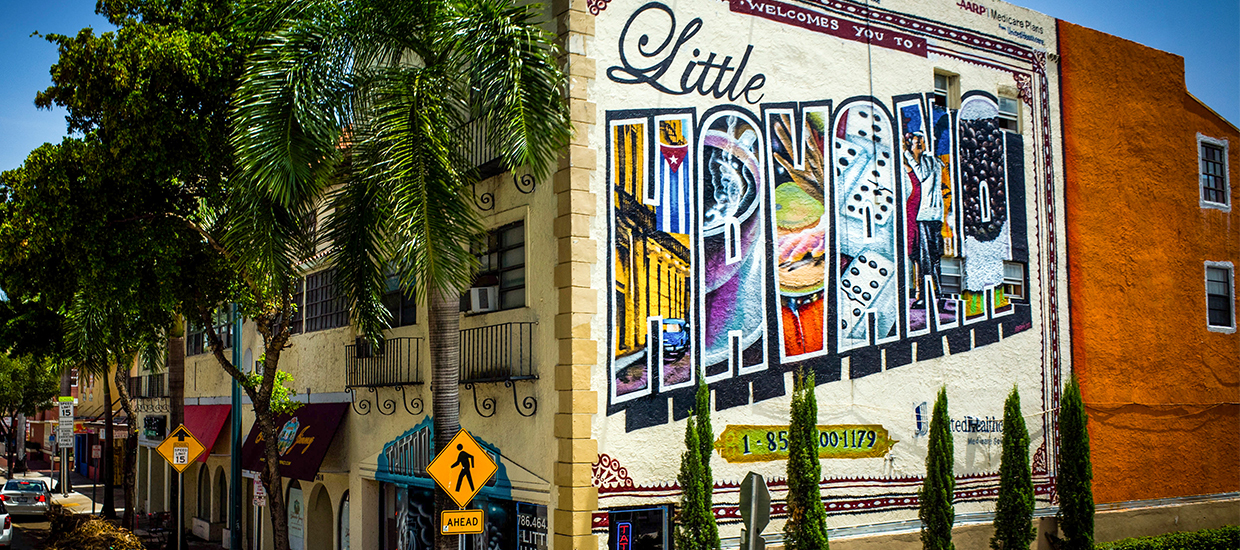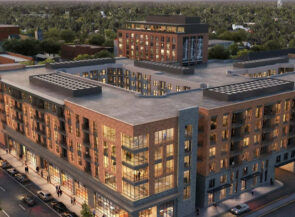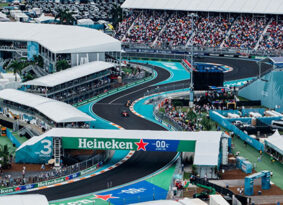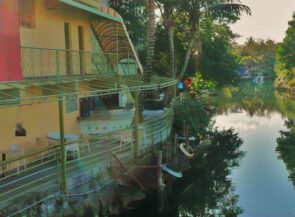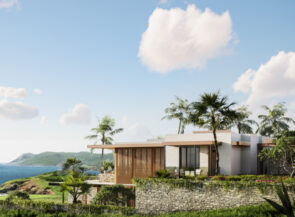Miami locals sometimes joke that, in some corners of the sunny South Florida city, English is considered a second language. Decades of Caribbean and Latin-American influence have shaped the city’s identity, from the rhythmic tropical music that wafts out of shop windows to the language spoken when caffeine fiends order cafecitos at the nearest ventanita.
While Cuba’s influence on modern Miami cannot be overstated, visitors would be remiss to overlook the rich impact of other Caribbean, Central American and South American nations on the metropolis dubbed the Capital of Latin America. Here’s a guide to the feast of flavors on offer, along with some classic landmarks.
La Placita
View this post on Instagram
It’s hard to miss La Placita restaurant when driving down historic Biscayne Boulevard in the MiMo (Miami Modern) District. Artist Héctor Collazo Hernández — best known for painting the Puerto Rican flag throughout the island territory as part of his 78 pueblos y 1 bandera project — painted the three-story flag mural on the facade. Inside, chef José Mendín cooks up traditional Puerto Rican dishes alongside creative takes on classics, such as the gandules (pigeon peas) hummus dip with tahini and plantain chips.
The North Beach Bandshell
View this post on Instagram
Just one block west of the shore, the North Beach Bandshell amphitheater’s MiMo-style design earned it a spot on the National Register of Historic Places in 2009. The outdoor space has hosted music since the 1960s, but it became one of Miami’s prime Latin-music concert venues when non-profit The Rhythm Foundation took over its programming in 2015. Notable stars to have played here include Colombia’s Monsieur Periné, Puerto Rico’s iLe and Cuba’s Cimafunk.
La Mar
View this post on Instagram
Miami has one of the largest Peruvian populations in the US, making it the ideal home for chef Gastón Acurio’s La Mar. Since opening his first restaurant in Lima, Peru, in 1994, the culinary ambassador has taken Peruvian cuisine global with more than 40 restaurants worldwide. The waterfront venue at the Mandarin Oriental hotel in Brickell Key boasts some of the best ceviche in the city—the view of the Miami skyline is a bonus.
The Freedom Tower
View this post on Instagram
About 1,000 miles south of the Statue of Liberty, the Freedom Tower — nicknamed the “Ellis Island of the South” — welcomed Cuban refugees from 1962 to 1974. Today, it’s home to Miami Dade College’s Museum of Art and Design, and the Cuban Legacy Gallery, where exhibitions explore the impacts of Cuban culture on the city and surrounding region.
Domino Park
View this post on Instagram
Midway between the two ends of the Calle Ocho Walk of Fame, which honors Latin artists such as Celia Cruz with engraved sidewalk stars, Little Havana’s Domino Park offers locals a chance to bask in their own glory; the retirees you’ll encounter in the park engage in epic battles on domino tables, and it’s common for spectators to spend the morning watching a few rounds. Across the street, the Azucar Ice Cream Company (its name a nod to Cruz’s signature “¡Azúcar!” catchphrase) makes for an indulgent post-game snack.
Jaguar
View this post on Instagram
Coconut Grove’s Jaguar restaurant is as much a feast for the eyes as it is for the taste buds. The Technicolor murals you’ll encounter on the walls reflect the diverse blend of Pan-Latin dishes on the menu. Try the Argentinian churrasco with Chilean merkén sauce for a taste of South America, or take a gustatory trip to Mexico with the Celia’s Salad, made with cilantro, jalapeño dressing, peppers and crispy tortillas.
